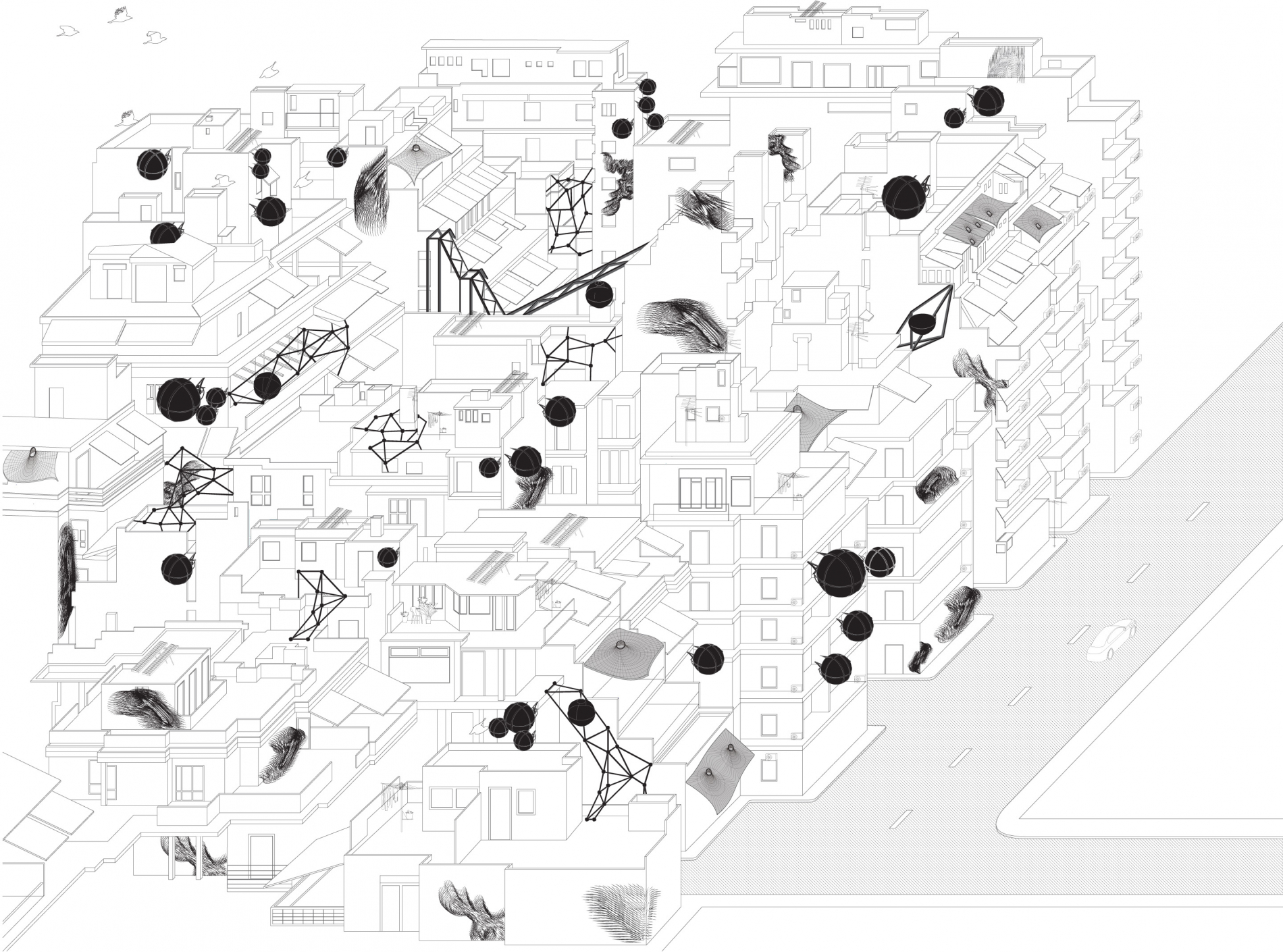Air Shake examines the character of air pollutants in Athens of the year 2027 to imagine both an array of future diseases and cures. It documents phenomena of leaching caused by a variety of chemicals that have been released into the atmosphere and their scientific, economic, and social attributes. Air Shake projects current urban habits in plausible future scenarios extracted from the present, based on the impact that different mixtures of air impose on human bodily systems. The project imagines an array of diseases that have begun to manifest in 2012, with Athens registering the highest levels of atmospheric pollution in decades. Because of the debt crisis and the citizens’ denial to yield to the overblown energy taxation, the continuous combustion of random cheap available materials, has resulted in the excessive release of particulate matter, sulfur dioxide, carbon monoxide, and other carcinogens, eventually disemboweling the livelihood of citizens and their right breathe in the city. The projection of four speculative diseases onto the urban environment takes form as a series of healing environments, making visible the linkage between the air pollution and the imagined disease. The Air Shake installation operates around two systems that together create an immersive experience. First, there is a series of chimneys, which present the city upside-down, spewing different shakes of air mixes to heal city dwellers. A secondary system is visualizing the air shakes each chimney spews in a virtual reality environment, accessible through a series of movable tablets installed in the room. The installation space is imagined as a virtual healing environment that allows the physical embodiment of the visitors to project and immerse themselves in a series of future atmospheres.
Air Shake
 Athens now accommodates a series of air cure plug-ins introduced to the urban infrastructure. Each plug-in aims utilizes new mixes of air pollutants to cure prevalent future diseases. Pods, membrane canopies, scaffolds, and spraying pistons are added to the city fabric, creating a secondary system of habitats of altered atmospheres.
Athens now accommodates a series of air cure plug-ins introduced to the urban infrastructure. Each plug-in aims utilizes new mixes of air pollutants to cure prevalent future diseases. Pods, membrane canopies, scaffolds, and spraying pistons are added to the city fabric, creating a secondary system of habitats of altered atmospheres.
Additional Info
- Author(s): Lydia Kallipoliti, Andreas Theodoridis with Xueping Li, Erica Vinson, Dakota Pace and Seraphim Le
- Year(s): 2017
-
Bio:
Lydia Kallipoliti (GR/US) is an architect, engineer and scholar, currently an Assistant Professor of Architecture at Rensselaer Polytechnic Institute and at the Center for Architecture, Science and Ecology in New York. Her research on the intersection of cybernetic and ecological theories is presented in a variety of media including online digital platforms, lexicons, databases and archives, exhibitions and holographic animations, with the scope of engaging a wide audience in what she calls ‘immersive scholarship.’ Her work has been displayed among other venues at the Venice Biennial, the Istanbul Design Biennial, the Shenzhen Biennial, the Storefront of Art and Architecture, RIBA and the Disseny Hub Barcelona and published in Architectural Design, Log, Praxis, Thresholds, Future Anterior and e-flux. She is the recipient of awards including the ACSA award for creative achievement, grants from the Graham Foundation and the New York State Council for the Arts, the Lawrence Anderson Award for the creative documentation history, a Fulbright scholarship and the W3 Medal for environmental awareness. Kallipoliti holds a SMArchS from MIT and a PhD from Princeton University. She is the principal of ANAcycle thinktank, EcoRedux research network and the author of the forthcoming book Closed Worlds, Or, What is the Power of Shit.Andreas Theodoridis (GR/US) is a PhD candidate at the Center of Architecture, Science and Ecology [CASE] of Rensselaer Polytechnic Institute in New York. He is an architect specializing in building systems and air pollution, having received a diploma in architecture and engineering from the Aristotle University of Thessaloniki and an MS in Sustainable Environmental Systems from Pratt Institute. He has fifteen years of experience in building and construction through the office he founded in Athens, 207x207 architecture network along with Stella Nikolakaki. Since 2010, he has been living and working in New York, has taught building systems at Syracuse University and Columbia University, and has worked as a consultant for the Cooper Union Institute of Sustainable Design.Erica Vinson, Xueping Li, Seraphem Le and Dakota Pace are students of architecture at Rensselaer Polytechnic Institute in New York.
Published in
Projects

